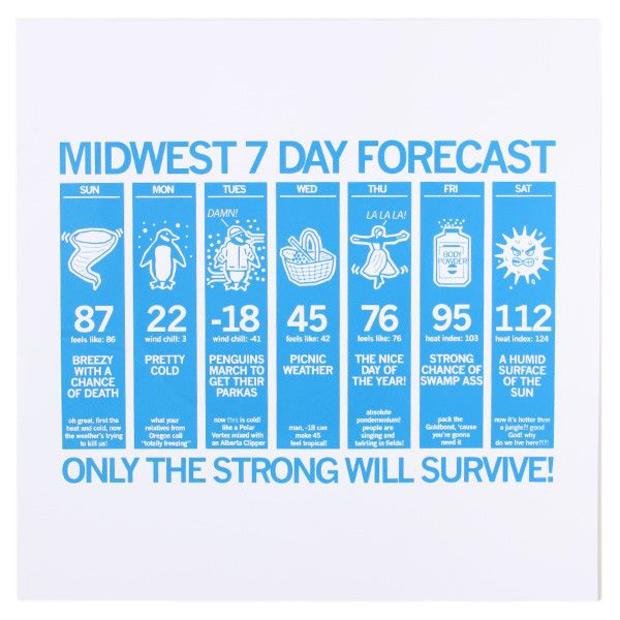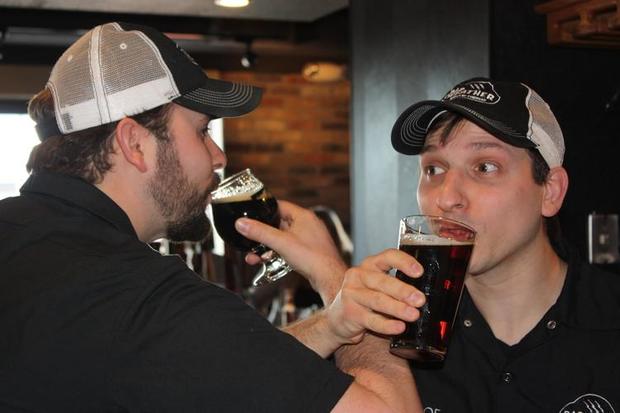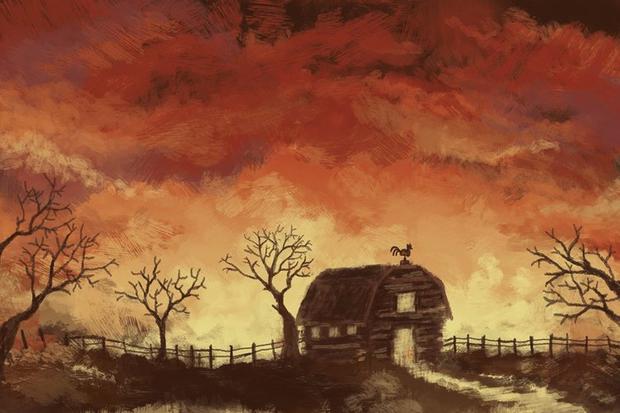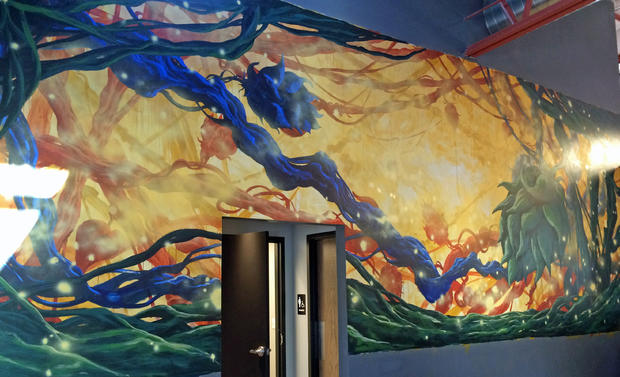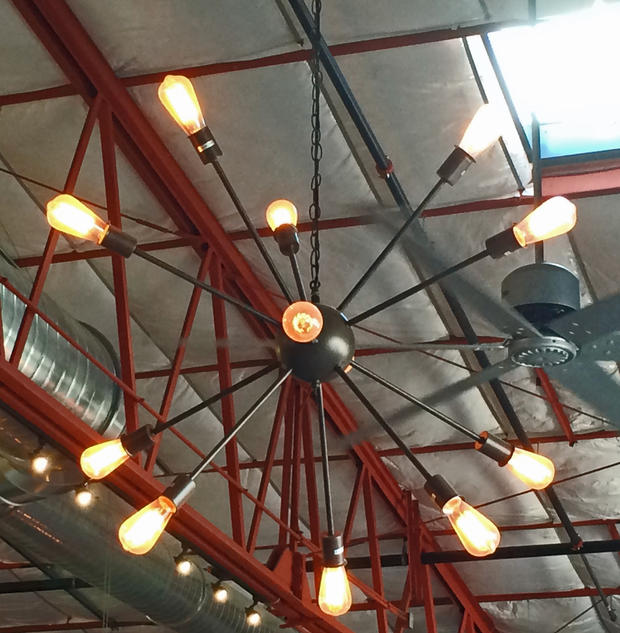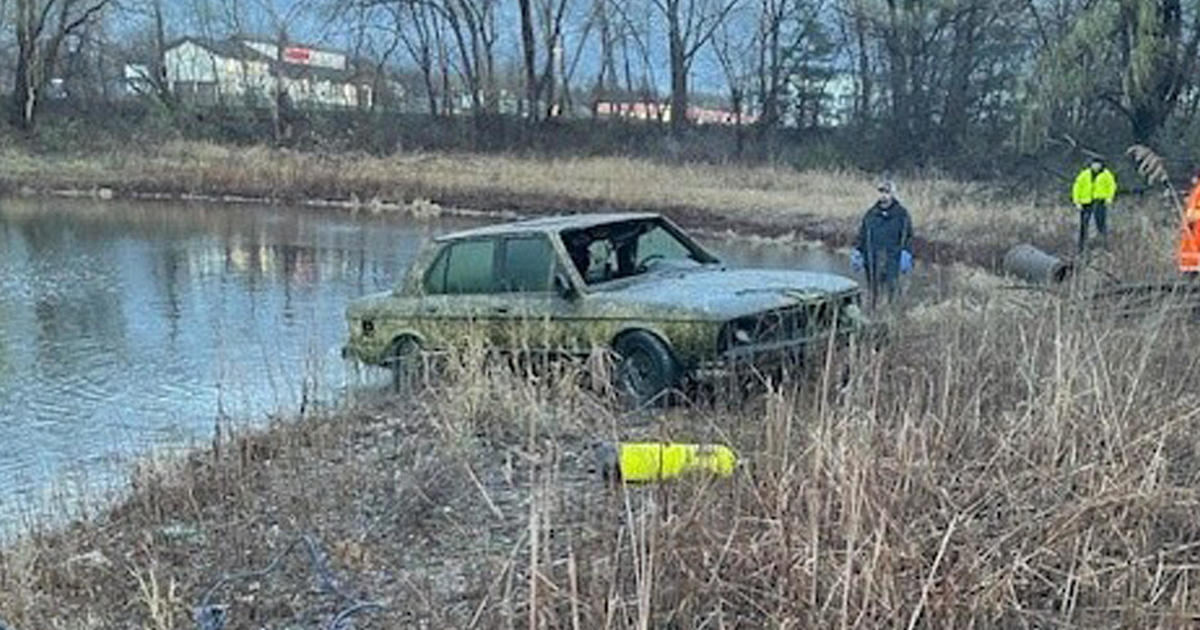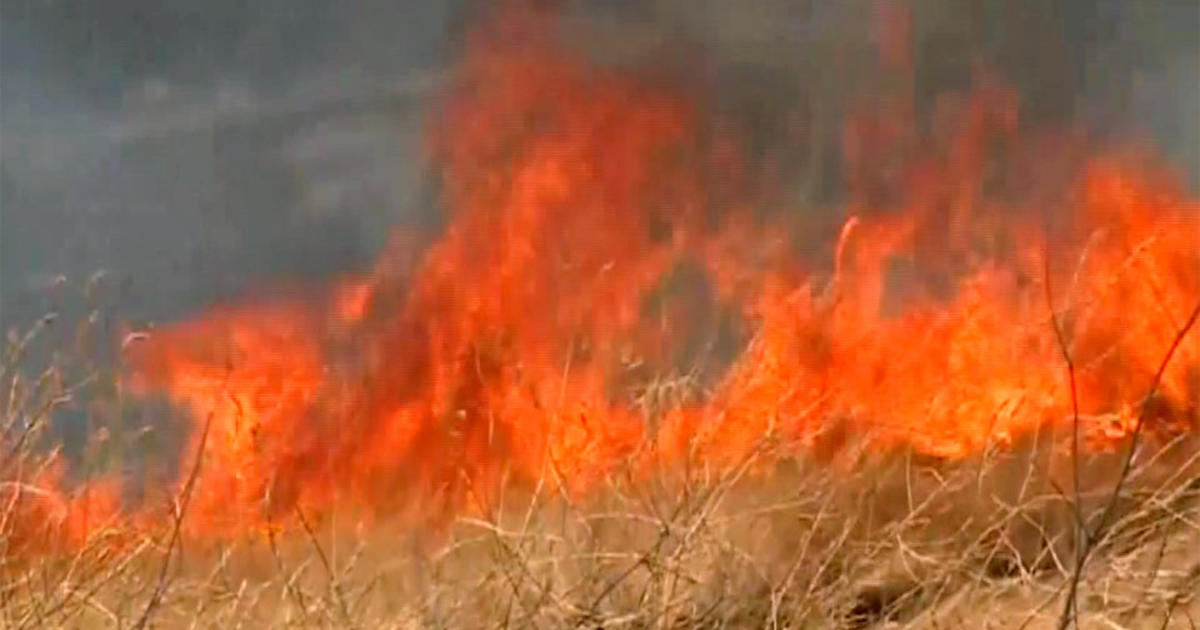Tap Talk: Bad Weather Brewing Company
Over the last five years, the craft brewery movement has grown exponentially in Minnesota. The Associated Press says licensing records show two-thirds of Minnesota breweries have opened just since 2010. So, we decided to help you – and your livers – keep up with the taproom trend by stopping by some of these Twin Cities brewhouses. This brewery's beer is available to taste, but you may have to wait a before you visit their taproom. This time we're visiting the new Bad Weather Brewing Company taproom.
It's a long running joke in every Midwest state that the weather is completely unpredictable.
With subzero winters and blistering summers, Minnesota is no different. Weather is a major part of conversation and everyday life here.
So it makes sense that a Minnesota brewery would find inspiration in the exact elements that can determine how their brewing may go.
Enter Bad Weather Brewing Company.
"[The name is] a function of brewing beer in Minnesota. It originally came from basically my home brewing days with my dad and brother," co-founder Zac Carpenter said. "We kind of jokingly at one point started calling ourselves that after a few times where it was horrible out every time we brewed."
When Carpenter teamed up with co-founder Joe Giambruno, the name stuck.
The two met as they were both attending different brewing schools – Carpenter at the American Brewer's Guild and Giambruno at the Siebel Institute.
Home brewers that decided to take their passion to the next level, Carpenter and Giambruno began spending time together brewing up beer and ideas.
"We got to a point where we thought, 'Hey, let's try to do something together on this and open up our own spot,'" Carpenter said.
Then Giambruno met with Lucid.
Lucid Brewing Company in Minnetonka allows smaller distribution breweries to use their space to brew. Breweries such as Badger Hill Brewing Company and, most recently, American Sky Brewing utilize Lucid's large building to make their own brews which they then can distribute.
Carpenter and Giambruno began brewing their beer and building their brand in Lucid's space in March of 2013.
However, shortly before their reached an agreement the legislation now known as the Surly Bill was passed and brewers could operate their own taprooms.
"Now all of a sudden you could build a taproom," Carpenter said. "We knew that when we eventually opened up our own space we wanted to do it to focus on taproom right away."
Finally, after two years of brewing at Lucid, the pair secured a spot in St. Paul and broke ground on Bad Weather Brewing Company's very own taproom.
"Now you can actually come to our place of business. You can see what we do, you can meet us, really see our brand a lot more than you would be able to do otherwise," Carpenter said.
As the finishing touches were being put on the building, I stopped by and spoke with Carpenter and Giambruno about their experience and how the taproom will enhance their brand.
Bad Weather Brewing Company
Follow them: on Twitter @BadWeatherBrew, Facebook at Bad Weather Brewing Company or visit their website Bad Weather Brewing online.
Owners: Joe Giambruno and Zac Carpenter
Head Brewer: Andy Ruhland
Location: 414 7th Street West, St. Paul
Hours: Wednesday - Thursday: 3 to 10 p.m., Friday: 3 p.m. to 12 a.m., Saturday: 12 p.m. - 12 a.m. and Sunday 12 to 8 p.m.
Contact: info@badweatherbrewing.com
What first drew you both to craft beer? Why did you want to start your own brewery?
Carpenter: I've been a huge import beer/craft beer fan ever since college. So for me, it was just really enjoying good beer and then a few years after college [I] got really big into home brewing with my dad and brother. We would do it almost every single weekend throughout the entire year, summer and winter – which is always interesting in Minnesota. [I] just really fell in love with the art mixing with the science and ultimately decided that sounded like a much more fun career than finance.
Giambruno: I had a similar story, too. My girlfriend, now wife, got me a home brewing kit back in college I fell in love with that. So after college, before pursuing a lot more schooling, I wanted to look into my other passion which was brewing.
With both of you being home brewers, how did you decide who would be the head brewer?
Carpenter: (laughs) We hired someone else.
Giambruno: He was actually over at Lucid. So he was working with us the whole time we were there. And he worked really well with us. One of the hardest working guys we know.
Carpenter: His name is Andy Ruhland. We just got along really well. We got to basically interview him over the course of three years getting up to launching our space and then just watching him work at Lucid.
That's awesome that he was able to come over with you guys to your new space! So with Lucid being out in Minnetonka, what brought you all the way to St. Paul?
Carpenter: We're both born and raised Minnesotans, but not from Minneapolis or St. Paul. We're from suburbia a little bit. [But] we both love St. Paul. It has a very different vibe than Minneapolis. There's such a high density population of people in Minneapolis/St. Paul that really love craft beer. When looking at Minneapolis versus St. Paul, there were so many places going into Minneapolis already and St. Paul just has a more relaxed vibe to it. And the people are really interesting and really care about their neighborhoods and businesses. So as we've gotten to know St. Paul and the people in the area we just thought this would be a perfect place for our brewery.
Minneapolis does have an influx of breweries! Even Surly moved there. But, being in St. Paul you have the grandfather of craft beer – Summit. Do you worry about being compared to Summit at all?
Giambruno: No, not really. You know they've done so much for the beer industry, it's great being in their shadow because they do great things. I think we're a little bit more focused on the taproom, so it's going to be completely different experiences.
Carpenter: Summit has gotten big enough where their kinds of goals are very different from the little guys. The taproom was very much an afterthought because they make most of their money with their distribution beer. Now they have a really cool taproom where people can go in, but it's never really going to be probably as much of a focus as the little craft brewers that are popping up. That and also variety. We're able to do different recipes a lot quicker, a lot more often and kind of throw stuff off the wall more than Summit would be able to because they are so big. They know what sells for them and people expect a certain product out of Summit. We get a little more leeway to play than Summit might.
Your focus when you started out was distribution as well. How will having a taproom change your business?
Giambruno: We're excited because we get to put out a lot more things. Over at Lucid we've got a very set amount of beer we can make. And since there's nothing in the taproom we really had to put a focus on all the beers that we packaged. But [at the taproom] we get to have a little bit more fun. We have tons of recipes that we had and have developed since we've opened that we're just excited to share.
Carpenter: It's fun because your customers are right in front of you. When you're doing just production beer you're sending it out the door and maybe you'll see some comments on Untapped or on Beer Advocate or something but you don't get to sit in front of people all that often and really just watch them drink your product. You don't get to see in the moment how they like that beer, what they like about it, if they're going to order another one. And we can get that analysis now right in the taproom, right in front of us.
So, let's talk about the beers! What are your core, packaged beers?
Giambruno: Windvane – that is our year round beer. That one is basically what we call a Red IPA. We've got the hops in there but the base of it is a red ale. There are some good malt characteristics, too. We put a touch of rye for a little bit of spice. So [it] kind of scratches all the itches that we have when it comes to a beer. It has a nice malt background, a good amount of hops and I love rye so we throw that in there.
Carpenter: Our current seasonal that we're kind of transitioning out of to our next one very shortly is Migration. That one's a blond ale and we brew it with rose hips. It's a really light, tasty blond ale. [It's a] good summer beer; a lawn mower-esque kind of beer but then we punch you a little bit with the rose hips to kind of make you think about it. So the rose hips will add a little earthy, kind of tea aroma and a little bit of a berry flavor. Then the one we're transitioning to now is the Firefly Rye Pale Ale which is a pale ale, but not your standard pale ale. Again, we're both big fans of rye so we put a good amount of rye in there. Then there are some very fruity, kind of tropical hops that play off the rye nicely. The spicy, smokiness of the rye and the tropical fruitiness of the hops kind of balance each other out. It's got kind of a unique flavor for a pale ale.
Giambruno: And then the last one, our cold weather seasonal and probably our longest seasonal that we have now, is Ominous. We call it an Imperial brown ale. So, that's basically a brown ale that we scale up to about 7 to 7.5 percent. There's Belgian candy sugar in it and it's fermented with English yeast. So, it's meant to be nice and rich but not heavy.
Have you done any specialty beers?
Giambruno: We did play a little bit with something we call Storm Cellar Series. Basically that's the larger format, one off bottles. We've only done two of those. The first one we did was called Schoko-Weizen which was a Dunkelweizen with cacao nibs. It's kind of a chocolate wheat beer. We got a lot of ideas that we had wanted to do, it was just tough.
What new beers can we expect to see in the taproom?
Carpenter: We're sitting on them right now. (smiles) We've been bringing some pilot batches out to some festivals. So [we'll] probably have a couple at the Autumn Brew Review.
Giambruno: Sky is the limit for us. We have quite a few tap lines. But in addition to that we have two nitro lines and also two cask beer engines. So, we want to have basically two infusions on it at all times. We're always going to be piloting different recipes, hosting home brew club meetings and keeping ideas fresh that way.
Are there are any flavors you haven't brewed with that we can expect to see in the taproom?
Carpenter: We haven't been able to do any barrel-aging, souring or any of that kind of stuff yet. And having our own spot here will allow us to use barrels and do a bunch of fun stuff with barrels. So I think we're really looking forward to that.
So, will you have a sour program?
Carpenter: Hopefully eventually. Not day one.
Giambruno: We have an area right now that we could potentially use that for. But we have to see how things go. But we'd love that.
Sounds like people will have to come in when you open to see what's new! So, of the beers you currently have, what is the best seller?
Carpenter: Windvane is always really steady, it's our flagship, but probably Ominous or Firefly. We have a lot of people that really look forward to those two beers. Ominous, just because you're getting into the colder, darker beer weather season and it's just a super good, easy drinking beer for being as big as it is.
For those that may not be familiar with your beer in the store but want to check out the taproom, what would you suggest to have them try?
Carpenter: I'd say probably Migration would be a good one to start off with. It's light; it's crisp. It's not going to have too much of anything that's going to put someone off for their first time. It is pretty easy to drink for just about anybody.
Of your current beers, what would you suggest for someone who considers themselves to be a bit of a beer snob?
Carpenter: Probably one of our Storm Cellar series. We did one called Due Date, which kind of commemorates my son's birth. We brewed it and released it about the same time that my now 17 month was born. It was a nine percent beer that was brewed with dates, cinnamon, ginger and allspice. It was a big, in-your-face, brown ale with a lot of spices; very Christmas cookie.
So, what are your favorite beers?
Carpenter: I always gravitate toward Windvane even though it's our one that is available all the time. I like the big hoppy beers, but the nice thing about Windvane is it also just has so much other stuff going on. You can get a little bit of that rye, spiciness. That malty red ale just really balances out the hops and makes a pleasant drinking experience. It's also a really good food beer.
Giambruno: I would probably go toward Firefly Rye, which is just coming out now. It has the unique hops, the southern hemisphere, Juicy Fruit hops, and it's not as heavy.
You mentioned that so many breweries were going in to Minneapolis, but there are a number of breweries near you in St. Paul as well. How do you plan to differentiate yourselves from the other ones?
Giambruno: The beers that we have right now kind of mix styles. We brew the beer we like to drink. We don't have an IPA out there. There are plenty of great IPAs. I love IPAs, but we didn't need to add to that collection right away. We will, of course, have one in the taproom, but it wasn't part of the distribution plan. We don't have the standard, basic beers. And I think people enjoy that.
Carpenter: That and I think our branding is unique. There's a lot of stuff we can do with it, playing off the weather themes and the emotional feelings you get looking at some of our artwork.
It's very environmental, visceral; you have a reaction when you look at it. We kind of want our beers to do that also. When you drink it we want you to think about it like, 'What are those flavors that I'm pulling out of it?' It's not going to be necessarily always straight forward and we wanted to make it more of an experience. Kind of like a lot of weather and environment is here in Minnesota. It's very much an experience.
The weather definitely is an experience here! I doubt it's the weather, but what do you think it is about Minnesota that has lent itself to this craft beer boom?
Carpenter: think a lot of it has to do with just demographics of Minnesota and the Twin Cities. If you compare us to Denver, Seattle or Portland they're very similar metro areas. The population bases are pretty similar. General demographics can be pretty close as far as the ages of people, the income levels. They're all huge biking, running, outdoors-y type of places. And kind of all that comes together and that type of person just seems to really, really love craft beer.
That's an interesting point! So, if we're looking at those other cities, where do you see the beer scene going in Minnesota?
Giambruno: I think we're going to see a lot of smaller brew pubs expanding outside of the Twin Cities area. There are already a lot of breweries outside of the Twin Cities opening up. And that's just going to continue to spread. I think with the more mature breweries you're going to see a lot of fun things, barrel-aging, maybe combining with a distillery or some sour programs going on. It's going to keep changing to whatever people want. We have more freedom to play around.
Carpenter: And we still have a ton of room for more breweries. A lot of people are making a big deal out of the idea that we will have over 100 breweries in Minnesota by the end of the year. There are well over 200 breweries in Seattle, Denver and Portland. And they're opening up more almost as fast as we are. At some point there will be a shake out, I don't know when that's going to be, but people just have to make good beer. But there's room for a lot of people to survive and make it.
Wow! I didn't realize some of those areas had so many taprooms. Looks like we still have a long way to grow. So, if you could describe the new taproom in one word what would it be?
Giambruno: Experience. We have that glass wall where you see us brew, and we want to have a lot of unique, different beers. Every time you come in we want to have something different.
Carpenter: Weathered.
*Bad Weather Brewing opened their taproom in St. Paul on Oct. 9, 2015. Their expanded list of brews are now available on tap.
